Last updated on
Because every door tells a story, this article has been crafted to inspire you with creative ideas for transforming otherwise ‘ugly’ doors into fascinating household elements rich in character.
I proudly present to you my article and accompanying designs on “20 Unique Ugly Door Ideas: Creatively Transform Your Space”, hoping you draw as much inspiration and amusement from it as I did creating them.
Looking to transform an unsightly door into a charming and appealing entryway? You’re in the right place! This article is packed with creative and practical ideas to revamp any door, no matter how unattractive it might be.
From a simple coat of paint to more intricate DIY projects, these solutions are sure to breathe new life into your space. Stick around to explore all the details that will guide you through the process, ensuring you achieve a result that’s not only aesthetically pleasing but also reflective of your personal style.
Table of Contents
Graffiti Covered Door
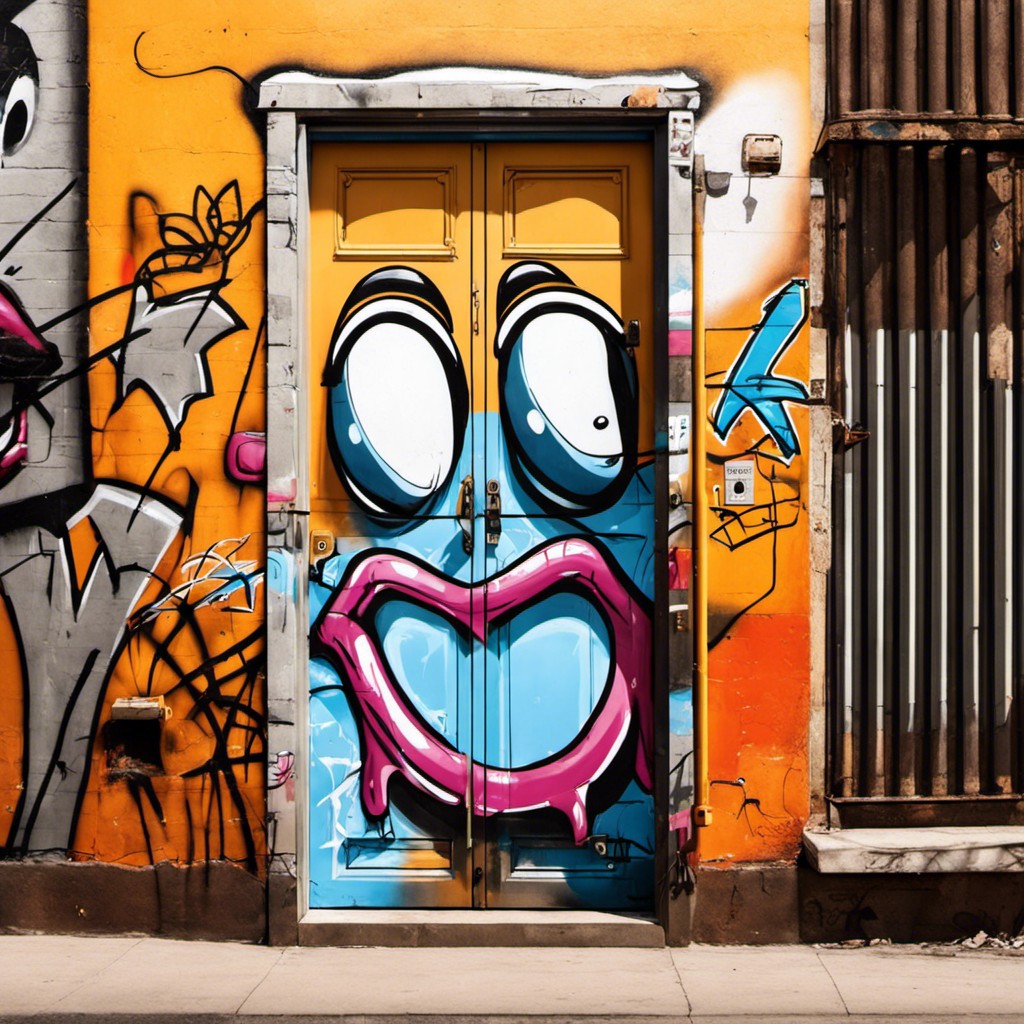
Great for injecting an urban, edgy vibe into the home, this door decor style is not dependent on artistic skills. Instead, it embodies expressive freedom and bold creativity.
1. Reflective of Street Art: It showcases rebellious and alternative facets of art culture, imitating the aesthetics of urban alleyways and underpasses.
2. Personalization: You can craft messages, quotes, or sketches, making the door a unique representation of your personality.
3. Bright Colors: The use of stark and vibrant colors guarantees the door will be an attention-grabber.
4. Evolution Over Time: Just like actual street graffiti, you can continually add to, or change the designs over time, maintaining its dynamic nature.
Ultimately, this decor style embodies an unconventional approach to home aesthetics, catering primarily to those with a passion for non-traditional forms of art.
Patchwork Metal Door
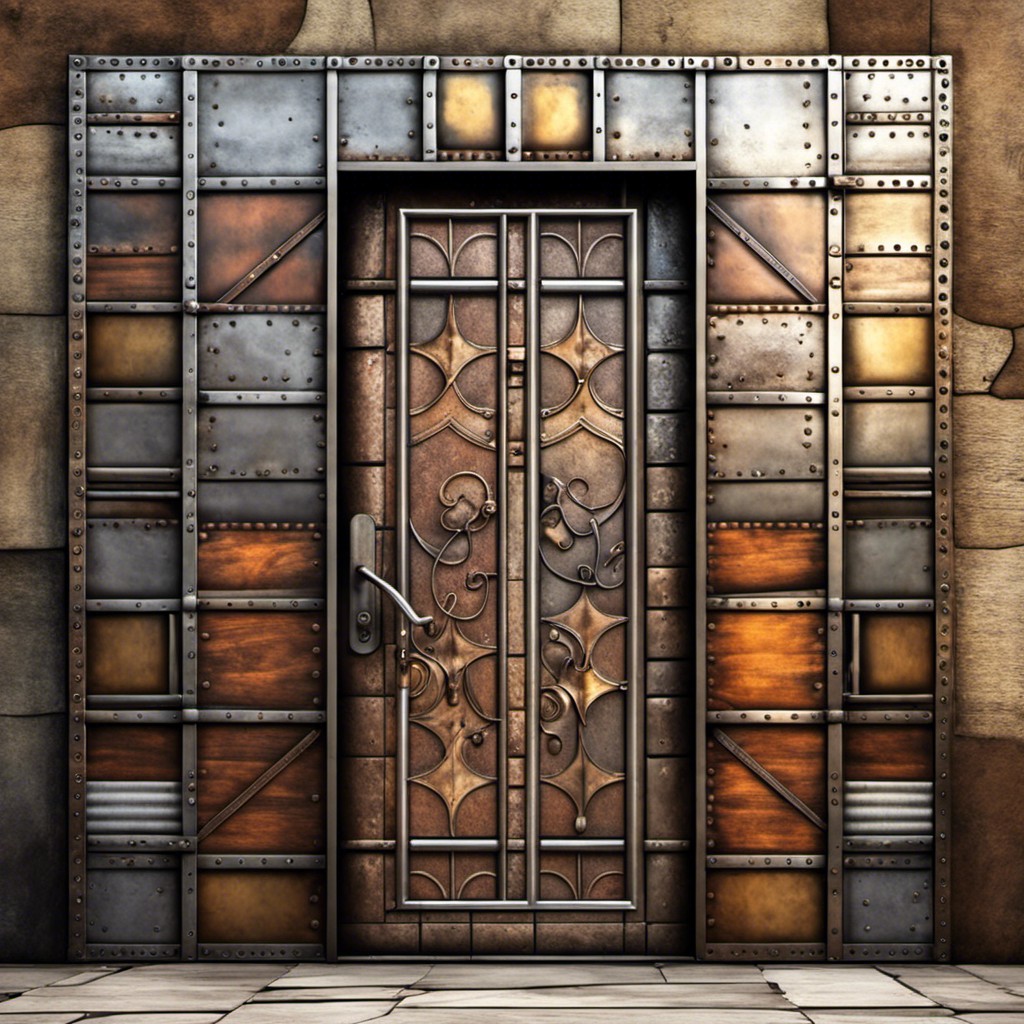
Crafted from diverse bits and pieces of older doors, a Patchwork metal door is an embodiment of uniqueness. It’s an interesting paradox, blending the old with the new in a functional display of art and history.
Here are some captivating reasons behind its inception:
- 1. Sustainability: This design concept contributes to waste reduction by repurposing old metal doors, promoting environmental friendliness.
- 2. Individuality: Each door is truly one-of-a-kind, born out of different metal pieces with their unique histories, textures, and colors.
- 3. Durability: Metal doors, in general, offer impressive longevity and resilience, an advantage carried over to its patchworked iteration.
- 4. Cost-Efficiency: Remodeling leftover materials rather than purchasing new ones can prove more budget-friendly.
- 5. Creativity: The design process may turn out to be a fun way of expressing creativity, especially for DIY enthusiasts.
Remember, it’s more than just an unconventional choice; it’s about stepping out of the ordinary, embracing imperfections, and creating beauty out of randomness.
Rotting Wood Door
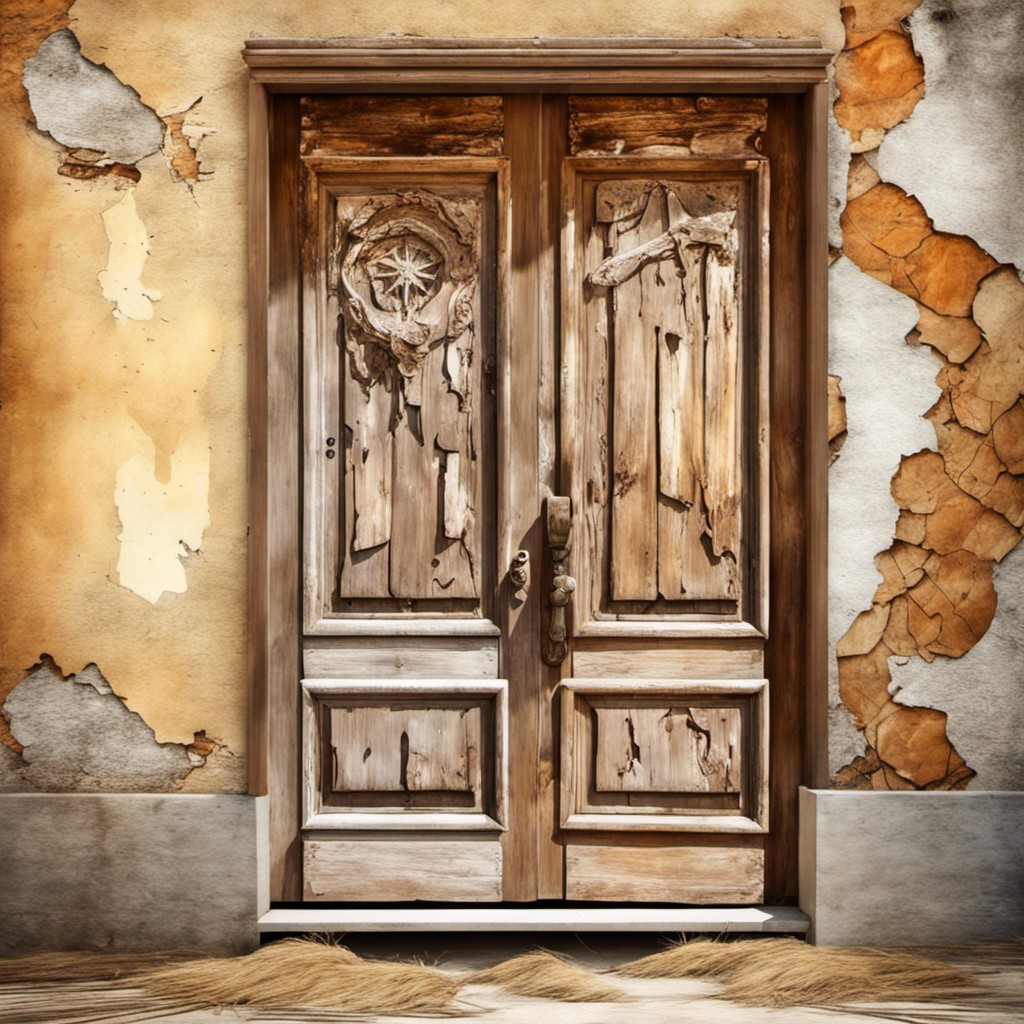
Beginning life as a robust and hardy entrance, unprotected exposure to the elements gradually takes a toll, resulting in the distinctive aesthetic of the rotting wood door. This ‘uglification’ process tends to emphasize the wood’s once vibrant grain with discolored streaks and pits.
1. Natural Decay: The organic process of wood decomposition can yield fascinating textures and colors. Over time, weather conditions strip away the wood’s protective outer layers, unveiling an array of streaks, pits, and cracks.
2. Character Addition: This rotting process notably enhances the door’s character. It offers a unique aged appearance that gives your home a rustic, down-to-earth vibe.
3. Striking Contrast: Pairing such a door with a modern, sleek home design creates an unexpected contrast. It breaks the stylistic monotony and makes for a great conversation piece.
4. Sustainability: Opting for a rotting wood door design is also an environmentally conscious decision. It maximizes material usage by harnessing natural decay instead of discarding weathered doors.
Unfinished Plywood Door

A unique statement piece in design lies in the unfinished plywood door. Intricate in its simplicity, this style brings raw beauty into any space, while facilitating versatility and price-effectiveness.
Here’s more about this unconventional door choice:
- 1. Cost Effectiveness: Plywood proves to be a budget-friendly option compared to traditional door materials such as wood or metal.
- 2. Texture Appeal: The rough, imperfect finish of the plywood creates an unexpected textural juxtaposition with refined interior decor elements.
- 3. Versatility: Its neutral tone complements a wide range of color palettes and styles; urban industrial, rustic, or minimalist.
- 4. Easy to Upgrade: Plywood serves as a canvas for customizations. It can be painted, stained, or decorated at any time.
- 5. Convenient Installation: Plywood doors are fairly light, making them easy to install and handle.
- 6. Thermal Insulation: Plywood offers decent insulation properties, potentially enhancing a room’s energy efficiency.
Remember, this design choice lends itself well to creative freedom. Whether leaving it bare for a truly authentic look, or opting to spruce it up, an unfinished plywood door undoubtedly serves as a noteworthy conversation starter.
Oversized Doorknob Door
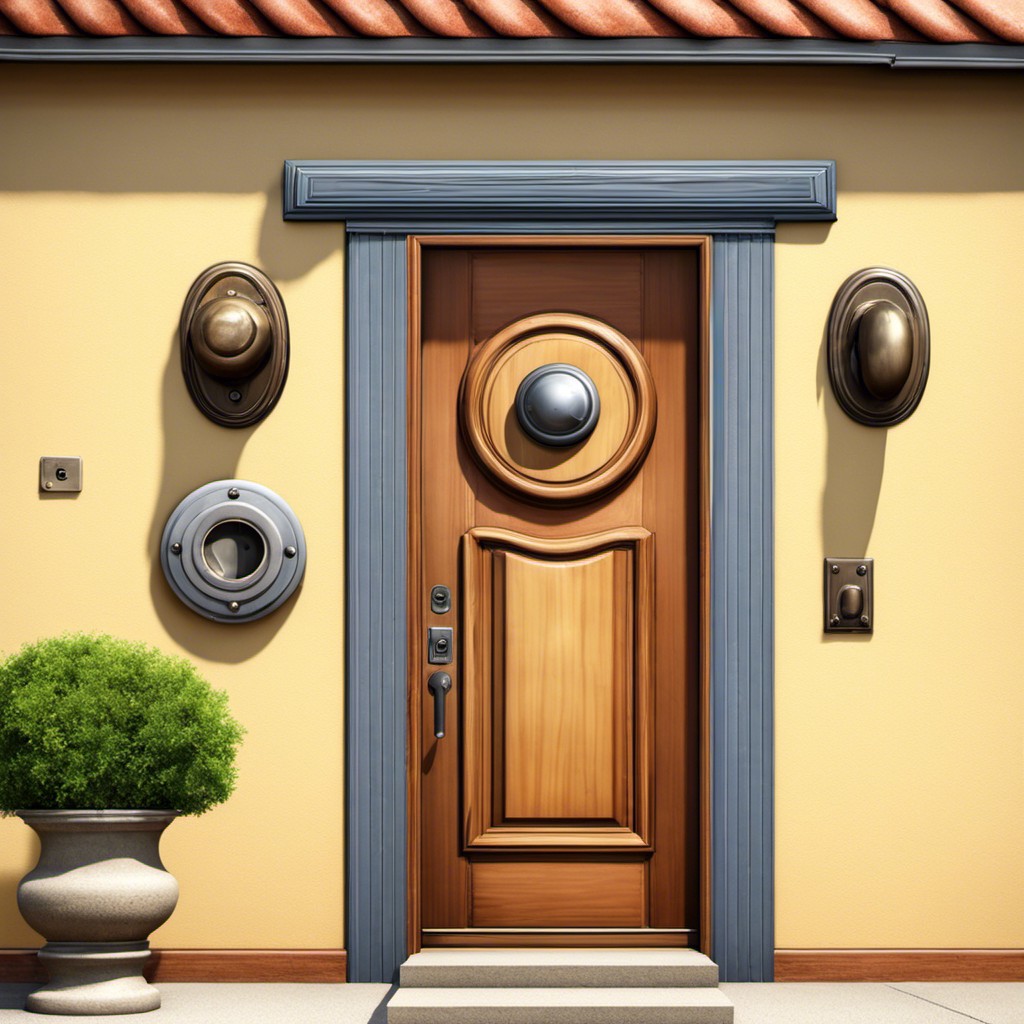
An oversized doorknob can seem humorous or endearing at first, but it may quickly become a major design flaw. The disproportionately large knob can throw off the balance of the door, making it harder to open and close effectively. It may also take up excessive room, limiting the usable space around the door.
Here are a few key points to consider:
- Dominates the door design: The oversized doorknob becomes the focal point, usurping the role of overall aesthetics or architectural style.
- Practicality issues: Larger knobs can be more difficult to grasp and turn, leading to potential accessibility challenges.
- Space consumption: Depending on how oversized the knob is, it might limit the surrounding space, causing inconvenience when navigating.
- Installation difficulties: Fitting an oversized doorknob may require professional assistance due to the need for specific tools or techniques.
While the oversized doorknob door surely makes a statement, it’s crucial to think about its long-term implications. Balancing form and function can be challenging, but undoubtedly rewarding when it’s achieved successfully.
Too Small Door
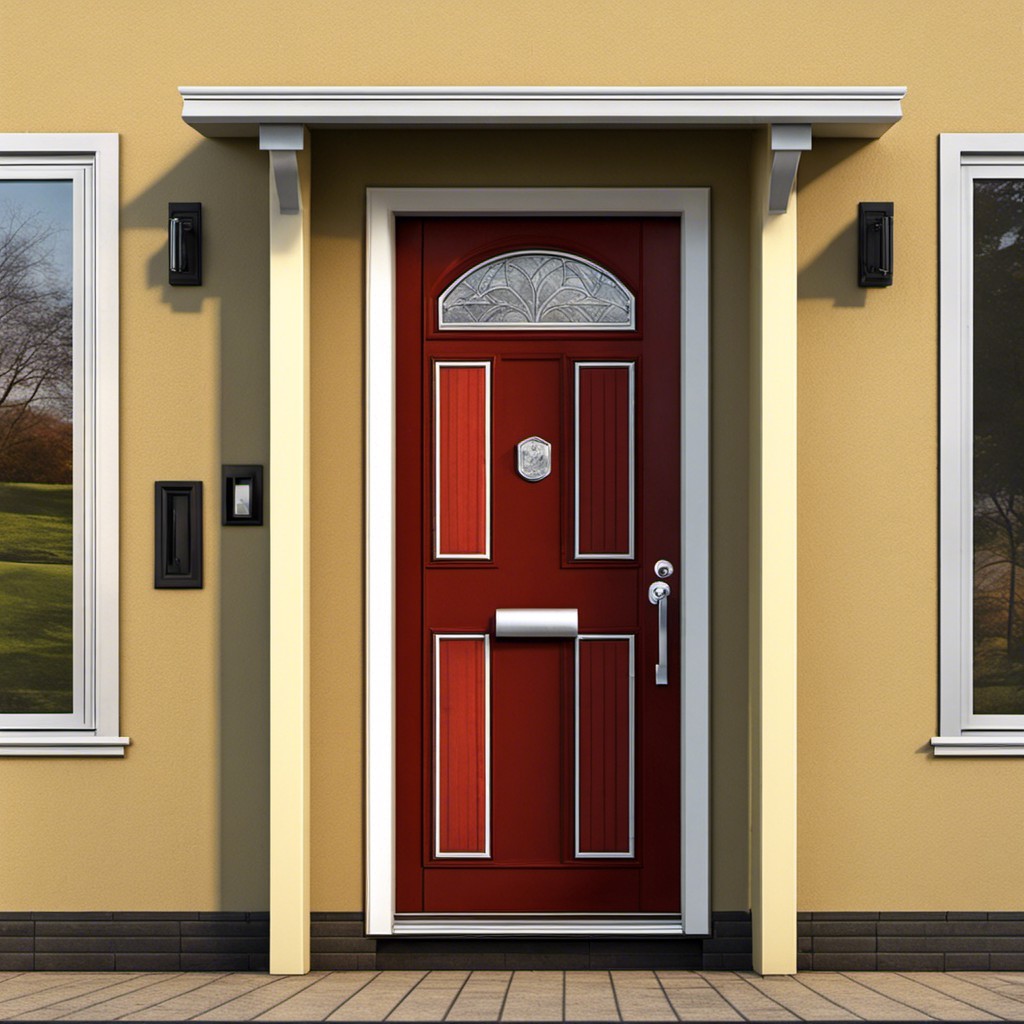
Despite being a somewhat unconventional choice, opting for a door that’s physically smaller than the standard size can make quite the statement. However, downsizing the entryway comes with its bizarre drawbacks.
1. Proportions: The smaller door size may distort the proportion of the house, making it appear visually larger. On a positive note, it can at times create an invitingly cozy feel to your property!
2. Practicality: Let’s not forget the practicality issues – moving large furniture in and out suddenly becomes a logistical dilemma!
3. Light: It’s important to remember that a smaller door means less natural light streaming in. However, strategically placed windows adjacent to the door can balance this.
4. Accessibility: Lastly, accessibility could be a concern. If the doorway is too narrow, it might pose difficulties for those with strollers or wheelchairs. Making it too short may also require taller individuals to duck!
In essence, experimenting with an understated door can lead to an exciting contrast, but its functionality may be compromised. It’s quirky, sure, but it’s a design choice that is not for the faint-hearted!
Peeling Paint Door
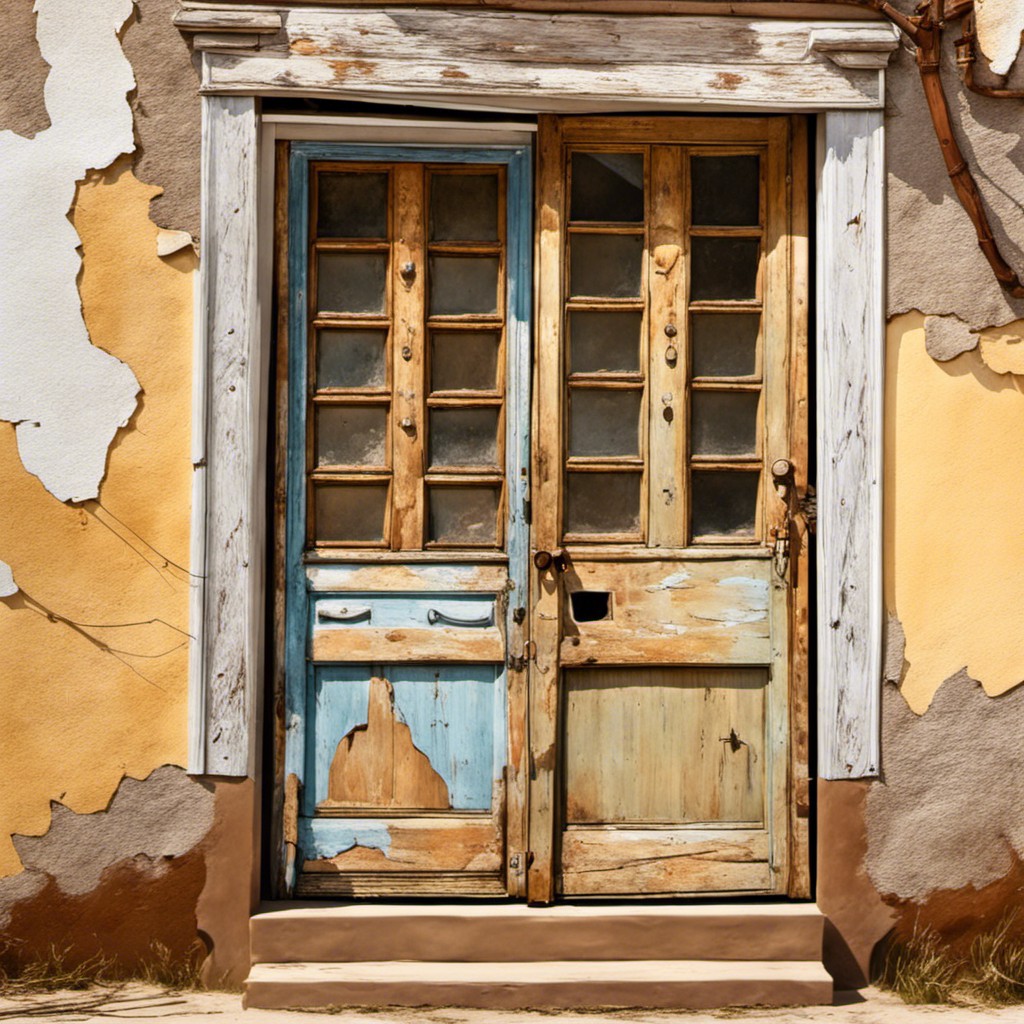
A door defined by the rich textures and hues of its peeling paint may seem unappealing, yet it boasts a certain charm, providing an edgy visual interest. This design mostly occurs from lack of maintenance; over time, as the paint starts to deteriorate, it naturally chips and peels off.
One might deliberately achieve this weathered look by applying layers of different colored paint and subsequently scraping off parts of the top layer. This seemingly ugly door approach can create a striking, vintage aesthetic, emphasizing character and history.
Despite its somewhat distressed appearance, it pairs well with rustic home decorations. When using this style, consider safety measures to avoid paint chips around young children and pets, as the old paint could contain lead.
Mismatched Colors Door
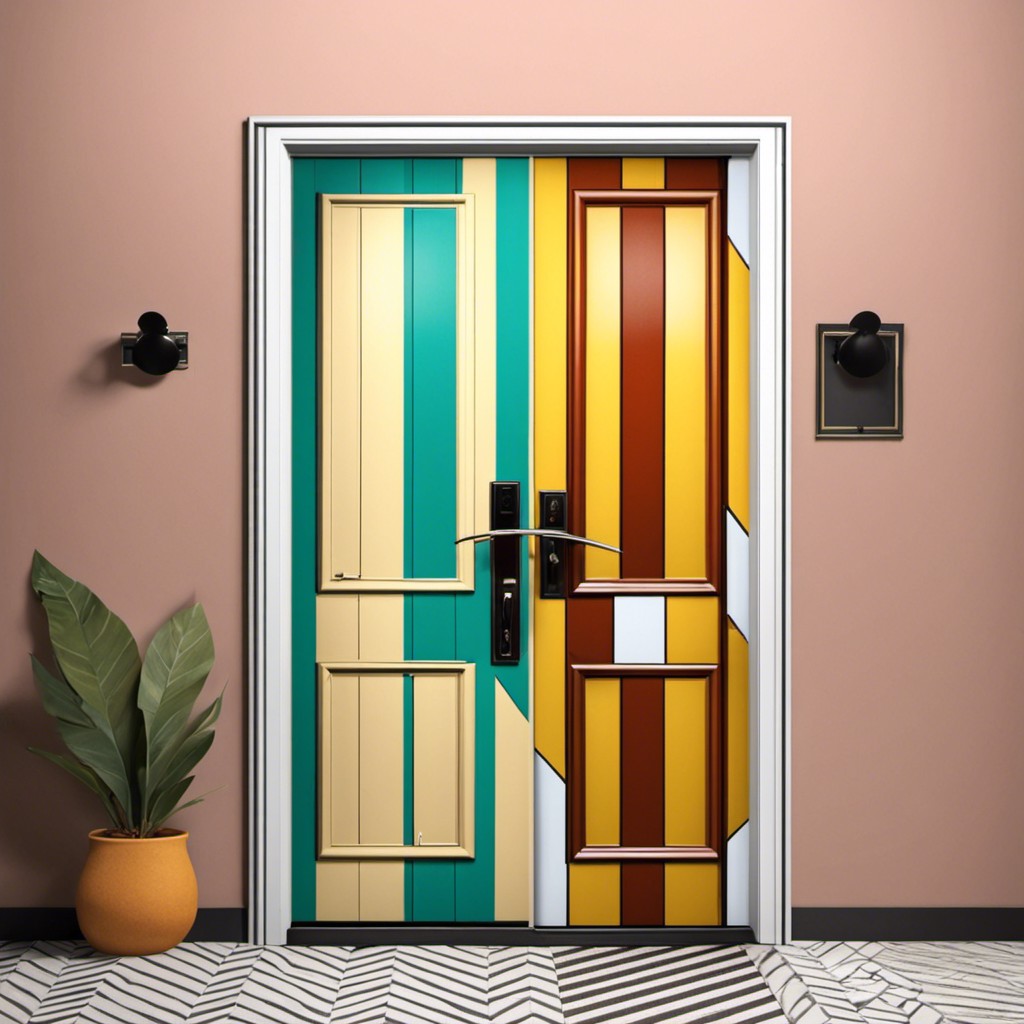
A jarring blend of hues can transform any ordinary entryway into a vividly grotesque spectacle, creating an exceptional example of an unpalatable mismatched colors door.
1. Experimentation: Playing with contrasting and not necessarily complementary shades can lead to a rather unpleasant, yet intriguing aesthetic. Think neon green and rich burgundy or bright pink splashed against dark brown.
2. Color Theory Disregard: Ignoring basic rules of the color wheel is key. Purposely pair cool and warm tones to induce visual tension, such as frosty blue paired with a stark orange.
3. Intentional Clash: Choose colors that clash to send a daring, discordant message. Unpopular combinations such as red and purple or yellow and blue can offer a rebellious visual experience.
4. Inconsistent Application: Instead of a perfect blend, let the previous color peek through the new paint, or use different paint textures to emphasize the mismatch. This kind of inconsistency makes the door not only mismatched in terms of color but also in terms of finish and texture.
Remember, executing this concept to perfection requires a bold attitude towards color conflict and a dash of wilful color chaos.
Asymmetric Pattern Door
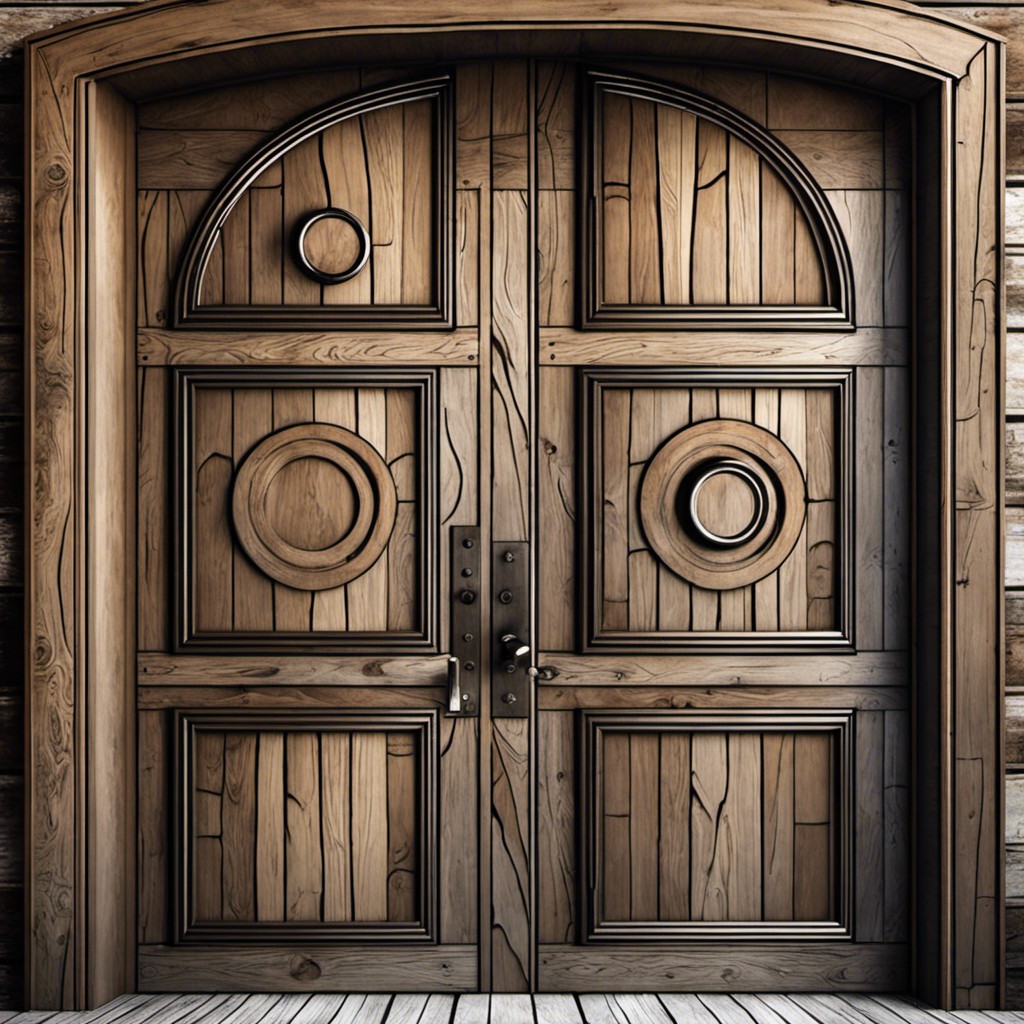
Embracing an asymmetrical design can create a unique focal point and stir conversation. When executed well, it can add a level of intrigue to your home. An uncoordinated array of patterns can be jarring, making your door stand out in an edgy and bold way.
Consider geometric shapes in off-balanced placement, such as trapezoids or triangles. Keep in mind that stark contrasts, like black and white, can accentuate the chaotic design. However, soft hues work well for a subtler effect.
You can choose to use a stencil or freehand the design, depending on your creative comfort. If you are using multiple patterns, plan them before starting to avoid design clashes later on.
Finally, an asymmetrical pattern may potentially offer an optical illusion effect, adding another level of complexity to your door design. Ensure the navigating elements of the door, like the handle or knob, are properly highlighted for functionality.
Door With Loose Hinges
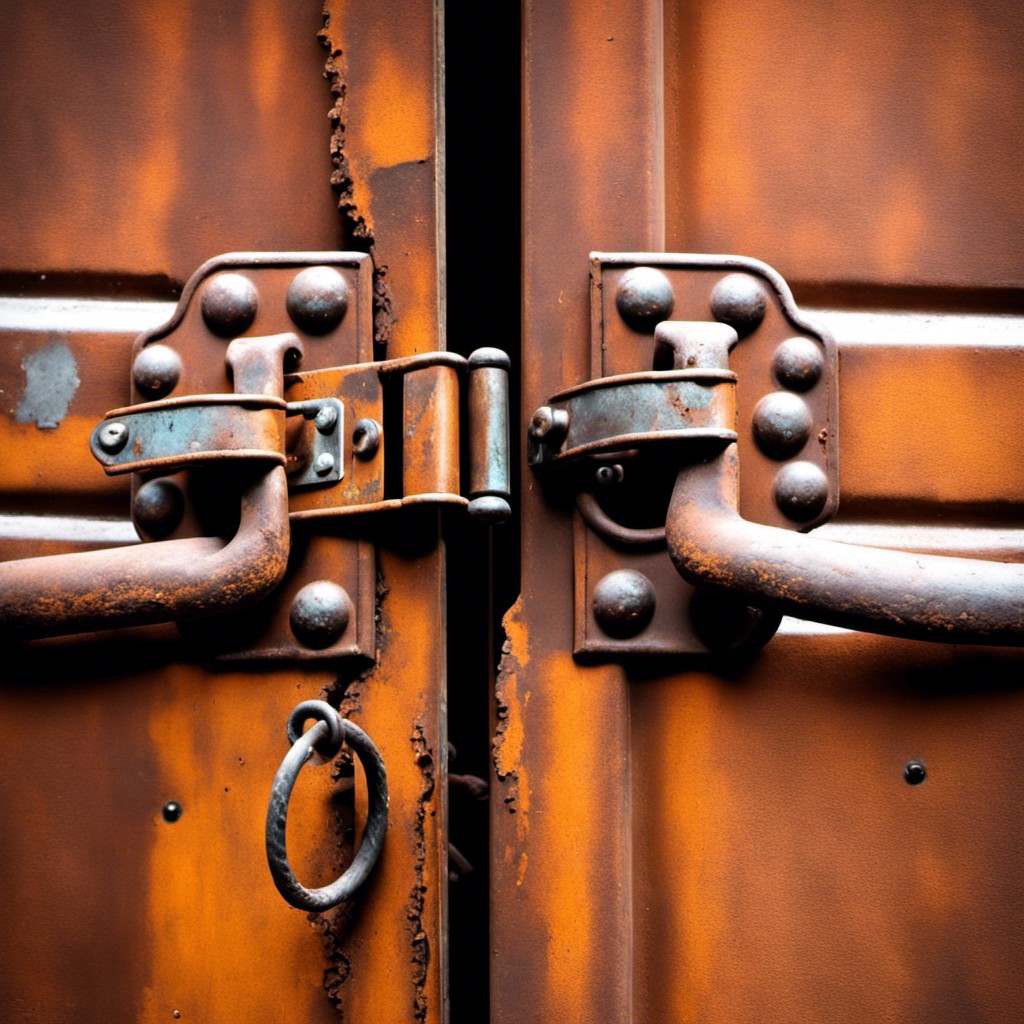
Creaky, unsteady, and seemingly ready to fall off at any minute — these characteristics epitomize doors with loose hinges. They might wobble as you open and close them, providing an unsettling sound and feel. The fear is part of the charm here! It’s a unique feature not commonly found in uniform, impeccably designed homes.
When incorporating this look, ensure it nonetheless remains functional. Embrace the so-called ‘distressed’ aesthetic by:
- Experimenting with different hinge materials such as rusty iron or tarnished brass for an extra vintage feel.
- Trying unevenly spaced hinges for a different kind of quirkiness.
- Allowing natural wear and tear over time to become part of the door’s personality.
Remember, safety comes first. Ensure any maneuver looks decorative, but doesn’t undermine the structural integrity or pose a hazard to the occupants.
Clashing Patterns Door
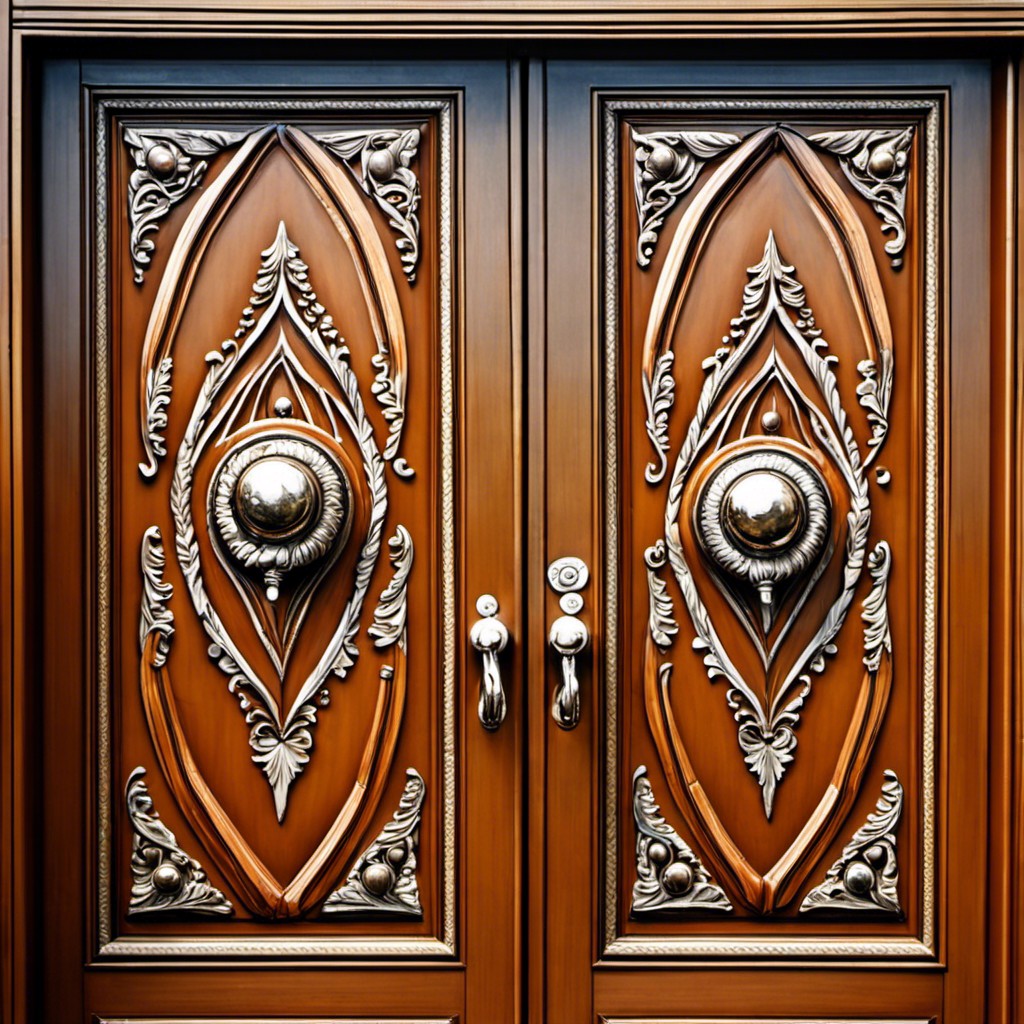
Dare to be audacious with vibrant, contrasting, and visually stimulating patterns that could initially seem incompatible. Here’s how you can transform an ordinary entryway into a statement.
1. Unleash Creativity: Use stencil art or wallpaper with varying motifs.
2. Experimental Fusion: Try a blend of geometric with organic or floral patterns.
3. Bold Palette: Employ unconventional, yet intentional color combinations.
4. Layer-up: Layer stripes over polka dots, zig-zags over abstracts for maximal impact.
5. Themed Mismatch: Follow a central theme, such as tropical or vintage, contrasting the designs within the theme.
6. Scale Variation: Pair large and small-scale patterns to avoid visual confusion.
Remember, the goal isn’t a chaotic spectacle, but a lively tapestry that extends an intriguing welcome.
Door With Old Bumper Stickers
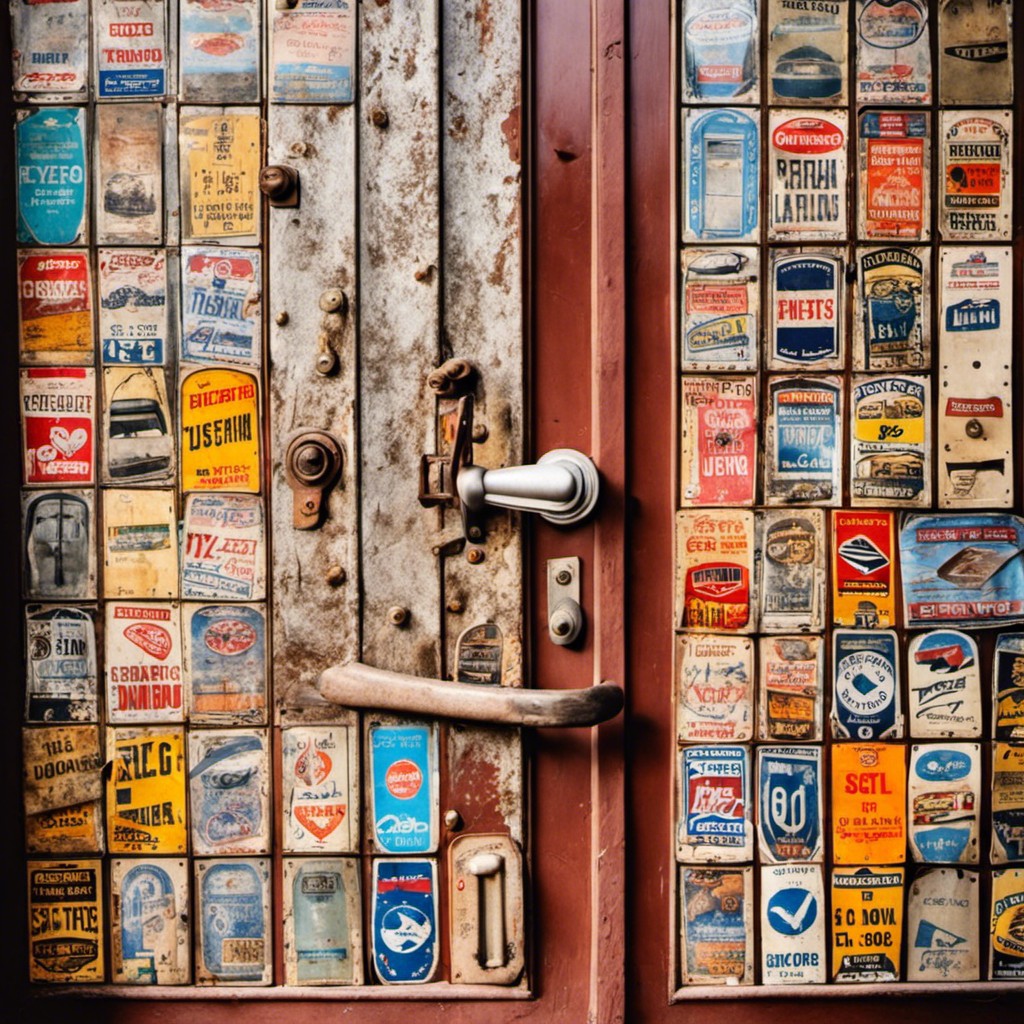
Translating your love for vintage items and personality into your home decor can be a strikingly exceptional move. One way to achieve this is by preserving any old bumper stickers on the door. These remnants of the past give a storied air, a bridge between times, providing character as each sticker reveals a glimpse into history.
1. Expressive: Every sticker can narrate a small story or show a personal belief, making it a conversation starter for visitors.
2. Uniqueness: Not many choose this kind of decor, giving your door a distinctive appearance that is hard to forget.
3. Nostalgia: Older stickers can prompt memories and encourage recollections of times past.
4. Easy to Manage: To maintain its authentic appearance, no specific upkeep or care is necessary.
Remember, it’s about cherishing the little imperfections that make our homes unique.
Flickering Neon Lights Door
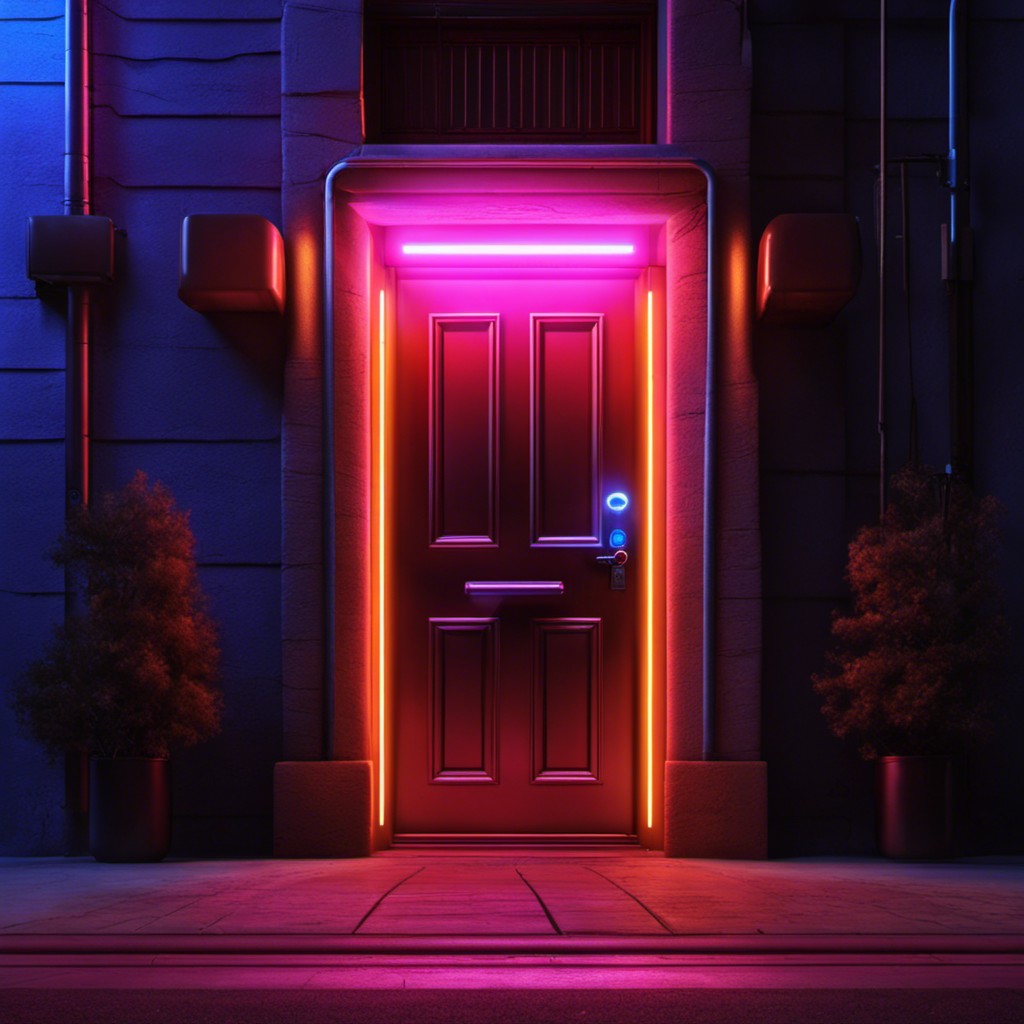
Having flickering neon lights on your door presents a unique aesthetic. This style screams 80s retro and comes with a set of distinct characteristics:
1. Busy Visuals: The incessant flickering provides an interesting sensory experience. It distracts the focus with its flashy, yet odd appeal.
2. Retro Feel: Neon lights can transport the viewer to a different era. It offers an unexpected and quirky vibe to your door.
3. Color Layers: Neon lights can be picked in various hues, adding to the overall mismatched appeal. A combination of hot pink and turquoise can be particularly striking.
4. Heightened Unpredictability: The flickering element of neon lights adds to the inelegance. The light’s inconsistency contributes to the overall ‘ugly’ charm.
5. DIY Choice: This could either be a DIY project or something you leave to a specialist, based on your comfort level and safety considerations with electrical work.
Remember, it’s all about owning the unusual look and creating an unpredictable entrance to your home. The purpose of an ugly door isn’t to win approval but to stand out. And this flickering neon lights door certainly accomplishes that.
Decaying Victorian Style Door
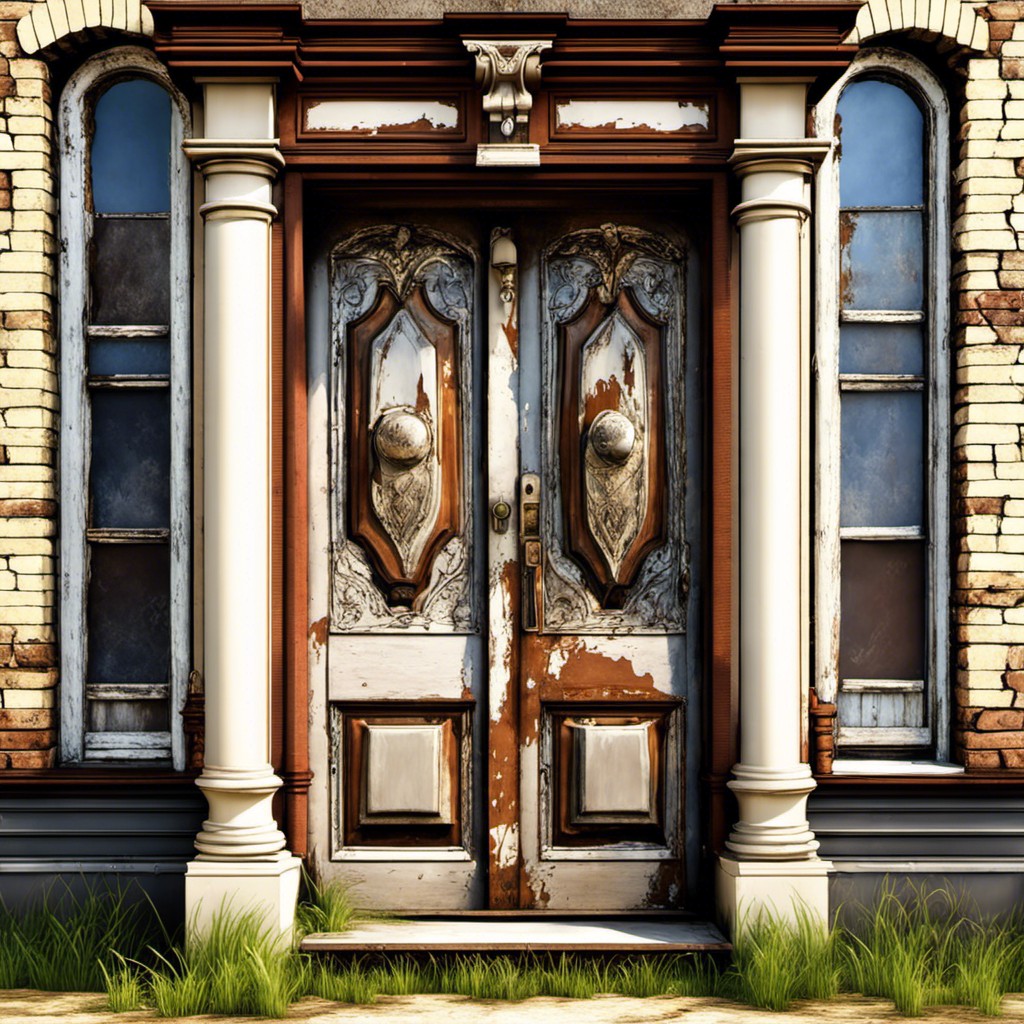
Capable of creating a mysteriously unique atmosphere, the salvage aesthetic of this design can truly shine in the right environment. The hallmark of this style comes with grandly archaic decorative trims, ornately carved panels, and stately heavy hardware.
Age, weathering, and natural decay are appreciated, providing a certain nostalgic charm. Some even prefer the partially stripped paint – a testament to its long-standing history – alongside the distressed wood. Opting for a door that displays years of wear and discoloration can be a bold and surprising aesthetic choice.
The use of antique or reclaimed doors from old Victorian homes is a common practice. However, don’t overlook modern replicas with intentional distressing, ideal for a more controlled yet authentic look. This concept is certainly not everyone’s cup of tea, but it pays homage to a bygone era in a distinctive way.
Door With Abstract Paint Splatters
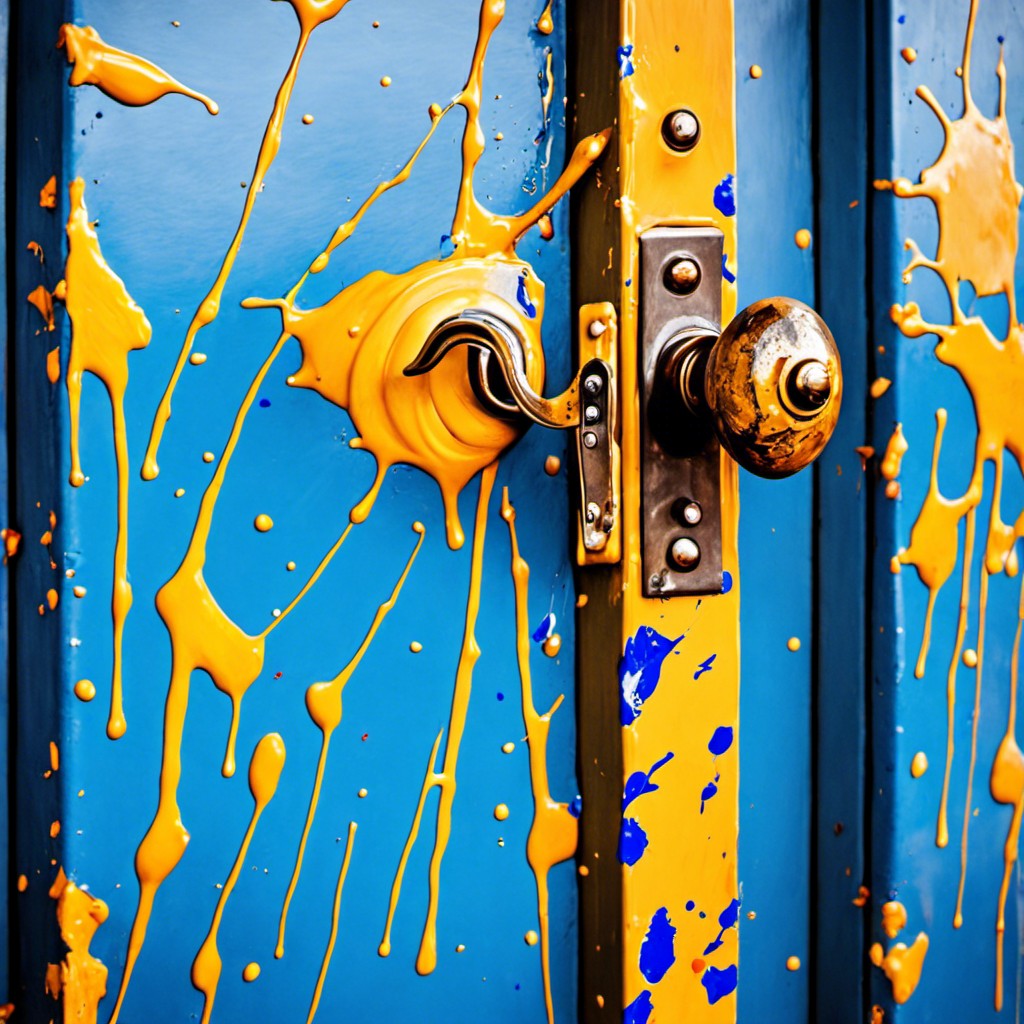
A grand departure from the usual, this aesthetic approach aims to harness the uncontrolled beauty of random formations. One enjoyable aspect of this design is that no two doors will ever be identical due to the unpredictable nature of splatters. Moreover, the color palette can be as quiet or as boisterous as desired, giving room for personal expression.
Primarily, this technique requires a drop cloth, array of paint colors, and a touch of courage. Begin with a base coat, allowing it to fully dry. Then, dip a paint brush into a contrasting color, gathering a decent amount of paint. Flick the bristles towards the door for a wide splatter, or clasp them and release for a fine spray.
Additionally, this method can be therapeutic and entertaining. By relinquishing control over the specifics and capitalizing on the randomness of splatters, this door becomes a symbol of creative freedom. It’s also worth noting to embrace imperfections in the process- they simply enhance the abstract nature of the design.
One valuable tip – always complete your project in a well-ventilated space or outdoors to ensure adequate air circulation. Safety and health should never be compromised in the quest for an unconventional front door.
Be prepared for commentary. While not conventional, this design is bound to catch eyes and controversial opinions – which is often the hallmark of an outstanding art piece.
Disproportionate Panels Door
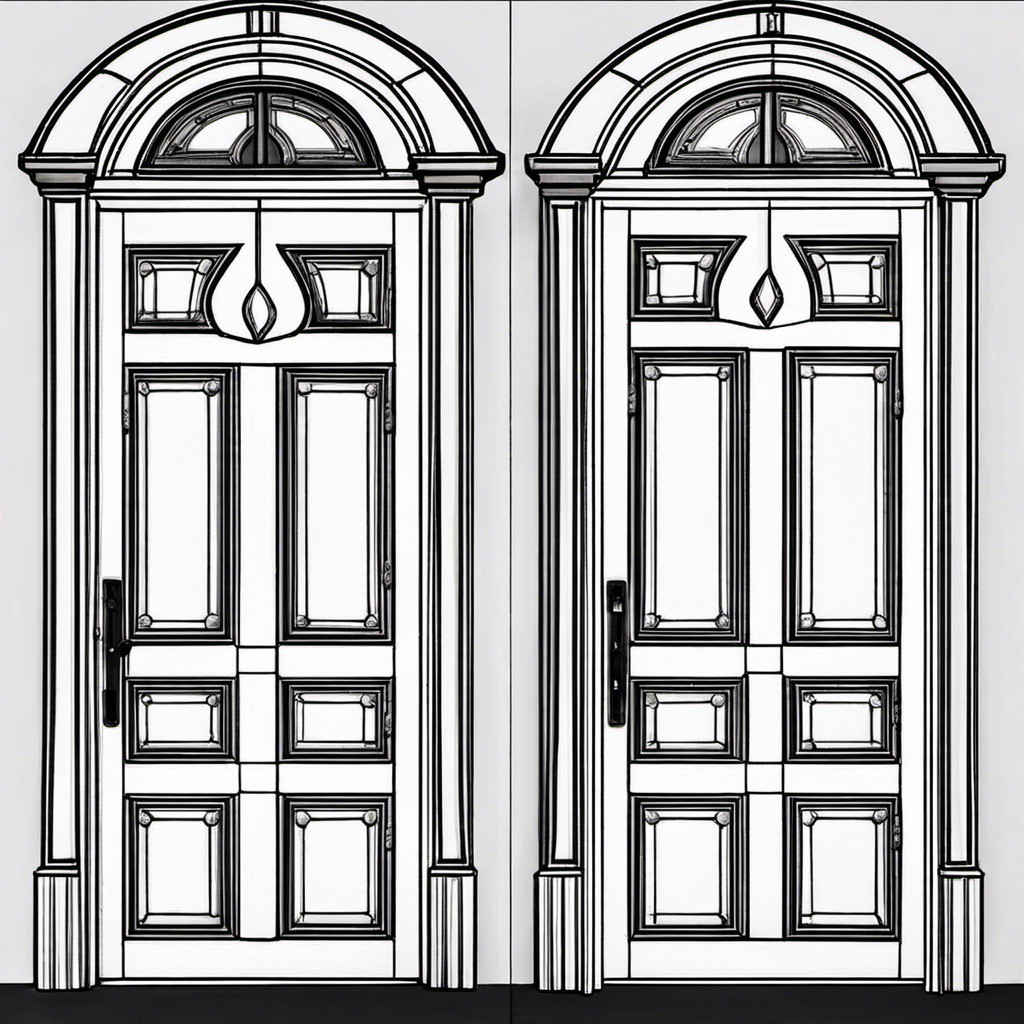
For starters, a variation in symmetry can immediately generate an uncanny feel. Disproportionate panels can be utilized effectively for this cause. It’s all about messing with the conventional design of a door.
Consider alternating between tall and short panels, or thin and wide ones. Have a long panel sandwiched between two short ones. Alternatively, play with a single large panel contrasted by several tiny ones arranged in an intricate pattern. Another option is off-setting the panels so they are not aligned directly atop one another, disrupting the expected flow of the door’s design.
However, remember to keep the functionality intact. Don’t let the creativity hinder the door’s primary purpose – to open and close smoothly. All these alterations can create visually perplexing, uniquely unattractive doors that grab attention for all the wrong (or right) reasons depending on your perspective, setting the tone for the rest of your decor.
Mirror Mosaic Door
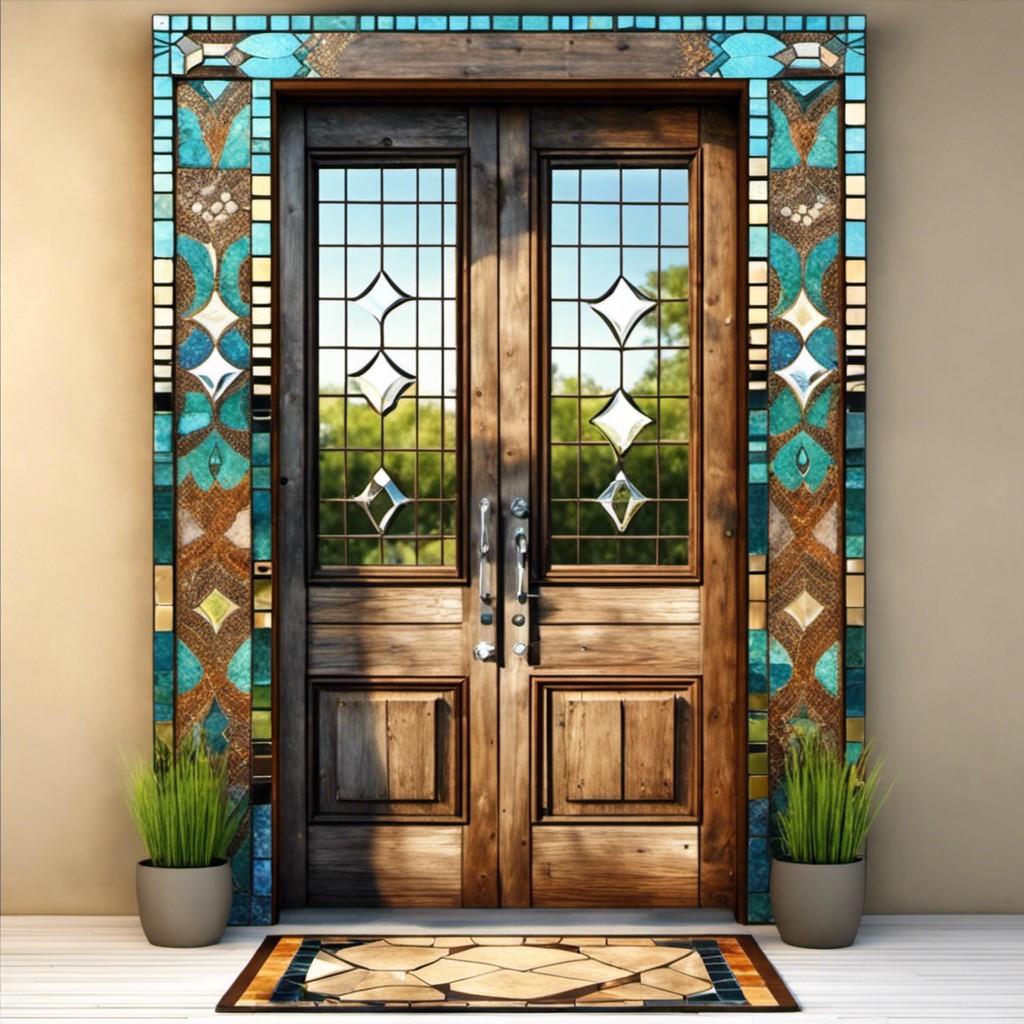
Placing mirror shards on the door can create a visually striking, albeit unsightly effect. The reflection from each piece catches the light differently, leading to a chaotic and muddled appearance. Complicating the visage further, is the incoherent reflection of the room which the mirror captures. This design often feels cluttered and overwhelming, making it a great choice for those seeking an ugly decoration.
However, there are more compelling reasons to avoid this type of door. Safety should be a homeowners’ paramount concern, and mirror shards present a genuine hazard, especially in homes with children or pets. Also, mirrors require frequent cleaning to remove dust and smudge marks.
Interestingly, if executed with precision and artistry, a mirrored door could lend a sense of glamour to a room. Yet, without care and meticulousness, they lean towards the realm of unattractive decor items.
Door With Visible Duct Tape
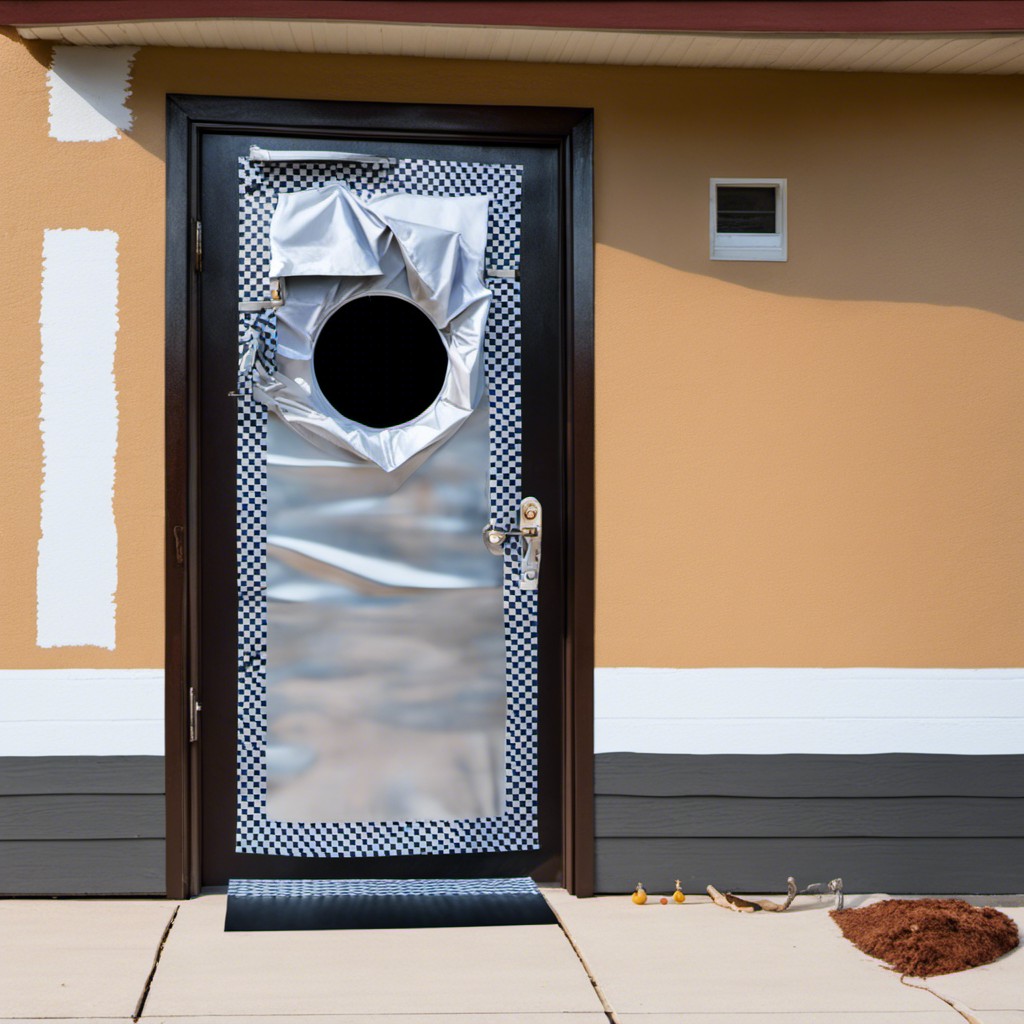
Visible duct tape, often deemed unattractive, offers a unique aesthetic in interior design. Its silver gleam and raw, industrial appeal can be embraced to create an unusual motif. Harnessing this concept requires proper application to avoid appearing shabby or neglected.
- Maintaining Tape Lines: Straight, well-aligned tape ensures a sense of deliberate design rather than disrepair.
- Harmonizing with Room Decor: Matching the room’s decor with duct tape accents can unify the overall appearance.
- Artful Patterns: Try a geometric arrangement or a layered effect for a more artistic look.
- Imperfection Embrace: Allow for minor imperfections. They amplify the raw character of the piece.
- Balance: Don’t overdo it. A door covered entirely in tape can backfire. Instead, use it to highlight or frame certain sections.
Overly Rusty Iron Door
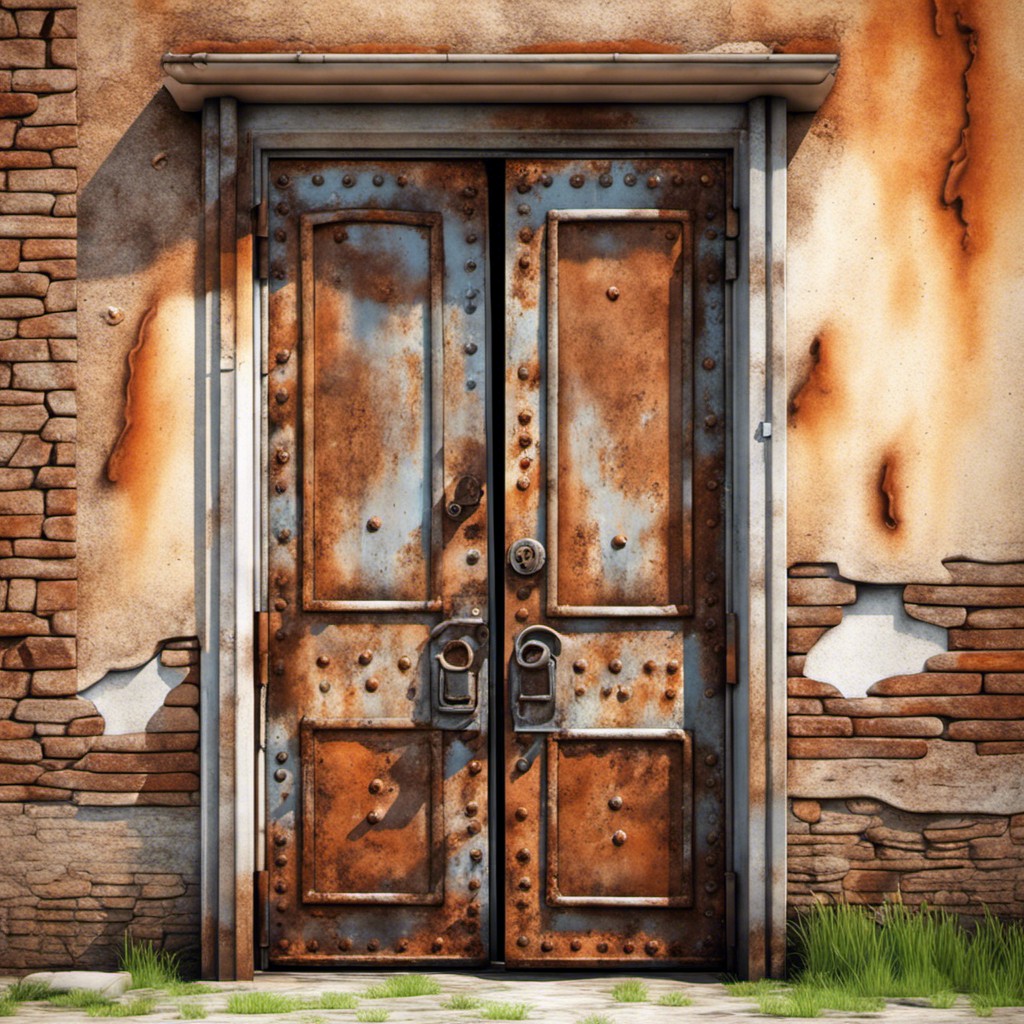
An ideal pick for those who appreciate the vintage aesthetic, making it pass as intentional design can be a challenge. This idea sees high marks in spaces styled with retro or industrial themes.
The exposed weathered surfaces provide textural richness that can’t be mimicked. There are essentials to bear in mind though:
- 1. Control the rust – Despite the aesthetic, it’s crucial to prevent excessive rusting. No design benefits if your door crumbles. Apply sealant or rust converter to halt worsening deterioration.
- 2. Complementary décor – Pairing this with antiques or reclaimed wood furniture amplifies the structured chaos. On the other hand, sleek modern pieces provide an offbeat, contrasting charm.
- 3. Maintenance – Regular check-ins to scrape off loose sections and reseal the surface is a small price for holding the look in place.
- 4. Create balance – Use softer elements in your door surroundings. This could include lush potted plants or pastel paint on surrounding walls. The idea is to create a vibrant tension between man-made decay and natural vitality.
- 5. Safety – Make sure the edges are not sharp to avoid any injury. A thick coat of clear sealant over rust can help.
- 6. Light distribution – Given its reflective properties, Rusty doors can alter the light scheme of your space. Plan accordingly to avoid overly shadowed or harshly lit spaces.
Remember, ‘ugly’ is subjective. To some, a rusty iron door might look dilapidated; to others, it brims with history and character. Ensure the above points, and this door could very well be the statement piece of your home.
Door With Dense Cobweb Decorations

Despite their often eerie association, cobweb decorations can make a door seemingly ugly. Dense cobweb decorations involve attaching faux spider webs across the surface of a door in thick layers, usually associated with Halloween or haunted house decoration.
Here’s why it makes the list:
- Infestation Implication: The illusion of heavy cobweb coverage can suggest an infestation, portraying your home as unkempt.
- Dust Accumulation: Over time, fake cobwebs can become dust magnets, exacerbating a dirty image.
- Difficult Cleanup: Removing cobwebs, especially if stuck-on or interwoven, can be a pesky task.
- Diminishing Visibility: When overdone, cobwebs can obscure a door’s design, relinquishing its appeal.
- Spooky Factor: Not everyone relishes the ‘haunted house’ effect, making it rather off-putting for some visitors.
Remember, less is more when it comes to making a statement with door decorations.




